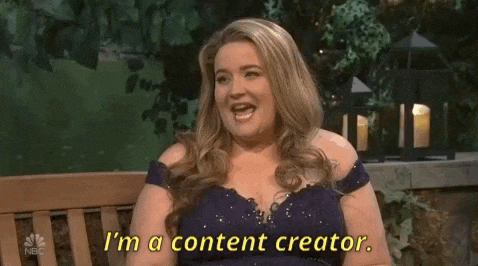Spin Class Case Study: It's Not About "A Joe Rogan of the Left"
What the NYT missed about the tough conversations Dems are having on the creator economy, new media, and the future of strategic policy comms
I’ve spent much of the last week talking shop with fellow national security policy comms folks, including Monday at FP4A’s 2025 Conference. As I’ve been processing these conversations, the New York Times popped a Teddy Schleifer piece circling around some of these issues (albeit with a domestic framing vice the foreign policy-centric convos in which I’ve been participating).
And, respectfully, I think the Times completely missed the point here:
At donor retreats and in pitch documents seen by The New York Times, liberal strategists are pushing the party’s rich backers to reopen their wallets for a cavalcade of projects to help Democrats, as the cliché now goes, “find the next Joe Rogan.” The proposals, the scope of which has not been previously reported, are meant to energize glum donors and persuade them that they can compete culturally with President Trump — if only they can throw enough money at the problem.
Granted, I haven’t seen every one of these pitch decks. But these are not the pitches I’ve been seeing, or the conversations I’ve been having. No one is talking about “throwing money at the problem.” Quite the opposite: what I’m hearing is a steady drumbeat from smart political communications experts - tellingly, mostly Millennials and Gen Z - who are trying hard to pull an older, more traditional media-oriented donor class into making strategic, long-term investments into the messengers and communications platforms that will dominate U.S. politics for the foreseeable future.
These conversations tend to circle around two main themes: 1) how to build sustained, off-cycle relationships with an array of news personalities, content creators, and influencers outside of politics and policy, and 2) how to change our internal incentive structures and dynamics to reward these kinds of engagements.
The quiet effort amounts to an audacious — skeptics might say desperate — bet that Democrats can buy more cultural relevance online, despite the fact that casually right-leaning touchstones like Mr. Rogan’s podcast were not built by political donors and did not rise overnight.
Again, with the caveat that there are certainly other convos happening - nearly every conversation I’ve had on this starts with “the goal isn’t to find the next Joe Rogan.” Real ones know that cliché entirely misses the point. No one serious in Democratic or progressive politics is kidding themselves that having a photonegative version of what MAGA has both built and co-opted (two very different strategies, both of which they’ve pursued effectively) is either possible or even desirable at this point.
The question now is whether the (older) donor class will understand these as the necessary, smart, strategic investments we need. If my conversations to date are any indication, it really remains to be seen whether establishment Dems can wrap their heads around all this and reorient themselves to invest in the creator economy. Again, I’ve mostly been focused on foreign policy and national security comms: arguably the most insular, clubby, and small-c conservative of all policy silos (at least when it comes to embracing new forms of communication). But it’s clear that for this pivot to embracing and working with the creator economy is going to work, policy elites have to get serious about changing their incentive structures to reward experimentation, authenticity, and risk from their messengers.

There’s a clear generational and elite institutional misalignment on what platforms are considered appropriate or correct to be on. So far, I’m not seeing any real reckoning with the structures and unspoken rules that keep Dems from taking these platforms and messengers seriously. I’m working on a separate piece on this, but for now: in a world where Kash Patel is considered Senate-confirmable by the other side, why are Dems still so cautious and snobbish about engaging with social media influencers - or, gasp, even becoming influencers themselves?
Here’s how I’d reframe these discussions from the NYT’s dismissive sniffs. I’m going to paywall most of this next section in order to be a bit more candid about some of the conversations I’ve been having and cut down the potential troll factor, but please consider this your periodic reminder that a monthly Spin Class subscription is less than a cup of coffee.
Yes, Dems Are Behind. On this, the NYT is right: the right-wing media and influencer ecosystem is over a decade in the making (three+ decades if you include the FOX News-to-creator pipeline).
Keep reading with a 7-day free trial
Subscribe to Spin Class to keep reading this post and get 7 days of free access to the full post archives.



